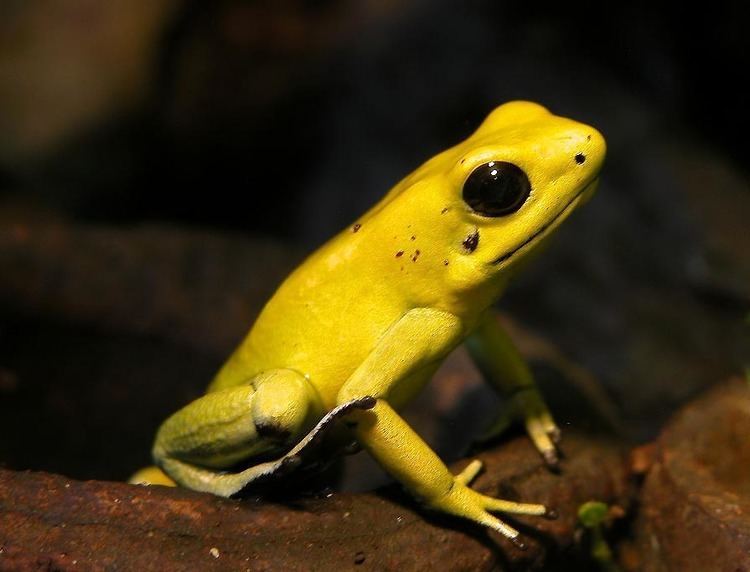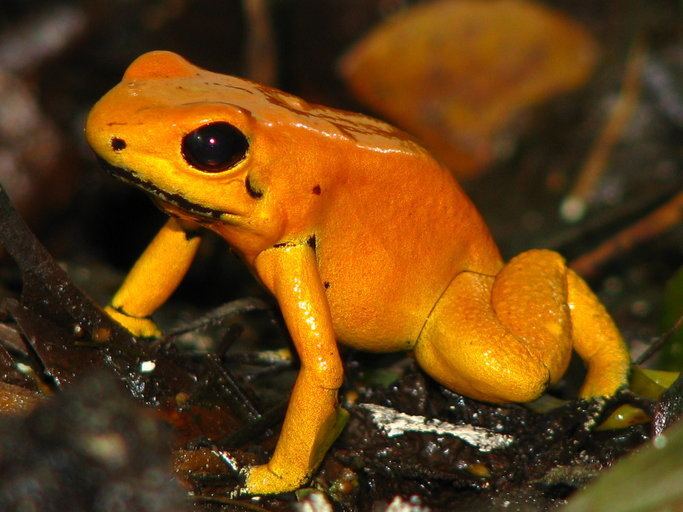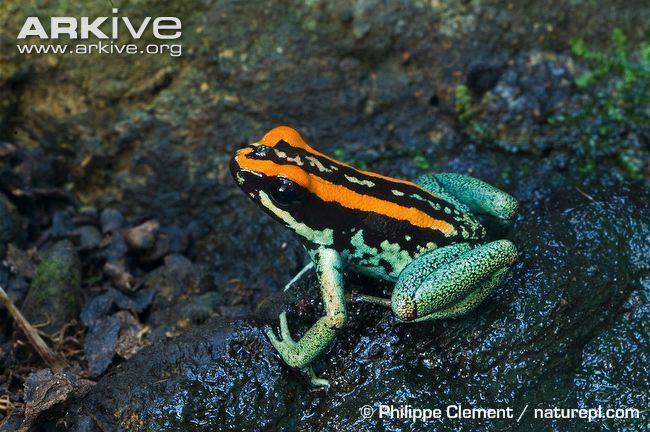Phylum Chordata Rank Genus | Family Dendrobatidae Scientific name Phyllobates Higher classification Dendrobatinae Order Frog | |
 | ||
Length Golden poison frog: 5.5 cm Lower classifications Golden poison frog, Golfodulcean poison frog, Phyllobates bicolor, Phyllobates aurotaenia, Lovely poison frog | ||
Phyllobates is a genus of poison dart frogs native to Central and South America, from Nicaragua to Colombia.
Contents
Phyllobates contains the most poisonous species of frog, the golden poison frog (Phyllobates terribilis). They are typical of the poison dart frogs, in that all species are colourful, and have varying degrees of toxicity. Only species of Phyllobates are used by natives of South American tribes as sources of poison for their hunting darts. The most toxic of the many poisonous alkaloids these frogs emit from their skins is batrachotoxin, but a wide number of other toxic compounds are secreted by these frogs.

Dart frog connection s phyllobates bicolor green leg
Taxonomy

Phyllobates (Ancient Greek for "leaf climber") used to contain many of the species which are now within the Ranitomeya genus. However, it now just contains those six members within the Phyllobates bicolor species group. These are:
P. lugubris species group
P. bicolor species group

All these different species within the genus exhibit a diversity in color. Some examples are, P. terribilis, with color morphs of "mint", "yellow", and "orange". P. vittatus, another example, is always black as a ground color, but can show yellow stripes, orange stripes, red stripes,(stripes of all colors can be seen in two forms, narrow- and wide-banded) and turquoise, green, or blue legs, etc. The bicolor dart frog (Phyllobates bicolor) can range from yellow to orange, from black legs to green legs, to almost a uniform color of any of the aforementioned color morphs. P. aurotaenia specimens are yellow-banded or orange. They are always smaller than P. vittatus, and beyond locality, this is the best way to differentiate between the two in the field or in the hobby.
